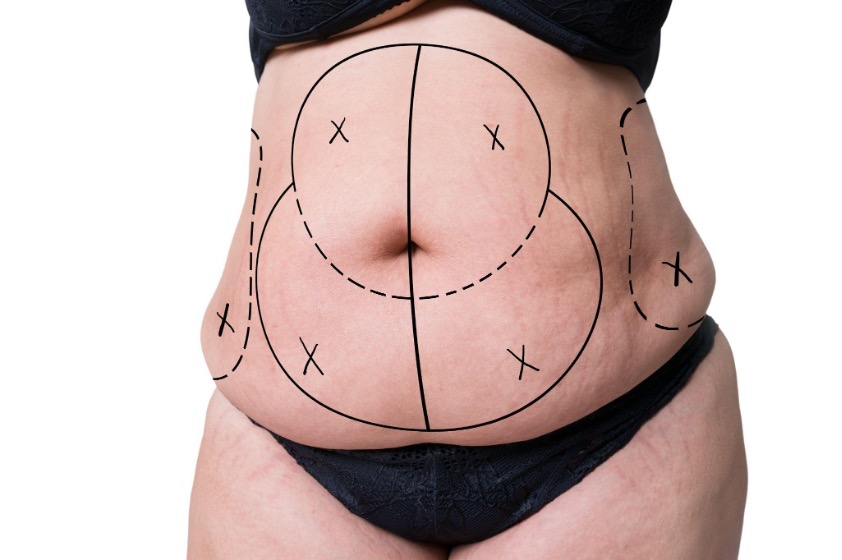The Post-Pregnancy Body Makeover: My Take on Tummy Tuck Surgery for Mums
This is a collaborative post

Hello, lovely mums (and mums-to-be)! I’m excited to share some insights on a topic that’s close to my heart—and abdomen: the tummy tuck (abdominoplasty). After having my two children, I realised how dramatically pregnancy can transform our bodies. From the extra skin that seems to defy all crunches to the lingering pouch that stubbornly stays put, these changes can be incredibly frustrating, no matter how many planks or healthy smoothies we commit to.
In this post, I’ll walk you through what tummy tuck surgery really is and why some mums consider it a part of their post-pregnancy “body makeover.” I’ve teamed up with Manchester Private Hospital for expert insights, so everything you’ll read here is based on solid medical know-how paired with my mum-to-mum perspective.
Why Mums Consider a Tummy Tuck
The Post-Pregnancy Body Shuffle
Let’s get real: pregnancy is like a magic trick that somehow stretches your tummy to accommodate a whole new human being. And while that’s truly a marvel, the aftermath can leave you with excess skin, weakened abdominal muscles (hello, diastasis recti!), and stubborn fat around the midsection. No matter how diligently you stick to workout videos or healthy eating, that stretched-out skin doesn’t always bounce back.
Emotional and Physical Ups and Downs
Feeling self-conscious about your tummy can affect your wardrobe choices, your confidence levels, and even your posture. Beyond appearance, some mums also experience back pain when abdominal muscles remain separated. A tummy tuck can resolve these issues by removing extra skin and bringing those muscles back together.
Why Surgery Helps
Unlike a quick fix promised by trendy diets, a tummy tuck physically removes and repairs what’s left behind after pregnancy. It’s a more permanent solution that directly tackles sagging skin and weakened muscles. Of course, the word “surgery” can be intimidating, so it’s crucial to have all the facts before deciding whether it’s right for you.
Understanding Tummy Tuck Surgery
Procedure Basics
During a standard tummy tuck, a surgeon makes an incision above the pubic area, tightens those stretched abdominal muscles, and trims away extra skin and fat. Then, they reposition the remaining skin to create a firmer, flatter belly. Even though there will be a scar, the idea is to place it low enough that regular undies or bikini bottoms can hide it.
Full vs. Mini Tummy Tuck
- Full Abdominoplasty: Best if you have lots of extra skin or need major muscle repair. This is often the go-to if you’ve had multiple pregnancies.
- Mini Tummy Tuck: Great if you only have a little excess skin right below your belly button. A shorter incision and possibly a shorter recovery time, too!
The Typical Timeline
Surgery can last two to four hours, depending on the complexity. Some mums stay overnight, others go home the same day—your surgeon will guide you on what’s safest. Initial healing can take a few weeks, and you might not see the final result for several months. Patience truly is a virtue here!

Combining Tummy Tuck with Other Procedures
The “Mummy Makeover”
Have you heard of the mummy makeover concept? It basically involves pairing a tummy tuck with other procedures like a breast lift, breast augmentation, or liposuction. It’s popular because many of us have more than one area that needs a little TLC after pregnancy.
Pros of Combining Procedures
- One Recovery Window: Instead of multiple separate surgeries and recoveries, you tackle everything in one go.
- Holistic Results: You can address your tummy and other areas—think of it like a head-to-toe tune-up.
- Confidence Boost: While physical appearance isn’t everything, feeling good in your skin can do wonders for your overall happiness.
Is it for Everyone?
Not necessarily. Combining procedures may mean a bit more time in surgery and a longer healing process. It’s a big decision, so a thorough consultation at Manchester Private Hospital can help you figure out what makes sense for your lifestyle, budget, and overall health.

Ideal Candidates for Post-Pregnancy Tummy Tuck
Health and Lifestyle
A tummy tuck isn’t a magical weight-loss solution. Generally, you need to be at a stable weight, preferably close to your personal “goal weight.” It’s also helpful if you’re a non-smoker, since smoking can complicate healing.
Diastasis Recti
If you have diastasis recti (where your ab muscles have separated), a tummy tuck can stitch those muscles back together. This can reduce that bulge in the center of your tummy and even improve posture or lower back discomfort.
Emotional Preparedness
Last but not least, it’s vital to be emotionally ready for the procedure. You’ll need time off your feet, which can be challenging with little ones running around. Make sure you have a support system—be it family, friends, or a partner—so you can truly rest during recovery.
Recovery and Aftercare
Initial Post-Op
Expect some soreness and tenderness in your midsection. You’ll likely wear a compression garment that helps reduce swelling and supports your newly tightened muscles. Pain meds can help manage any discomfort, and gentle activity—like short walks—can help with circulation.
Mum Life Hacks
- Plan Ahead: Stock your freezer with easy meals and arrange for childcare for at least a couple of weeks.
- Don’t Rush: Avoid lifting anything heavy (including those adorable toddlers!) or doing strenuous activities for several weeks.
- Incision Care: Keep the area clean, follow your doctor’s instructions, and attend all follow-up appointments. These check-ins are where you can address any concerns early on.
Follow-Up Is Key
Regular check-ups can ensure you’re healing properly. If anything unusual comes up—like increased swelling, redness, or pain—give your surgical team a call. Early intervention can prevent small issues from becoming big ones.
Frequently Asked Questions
Can I Have More Kids After a Tummy Tuck?
Yes, technically you can, but another pregnancy could re-stretch your skin and abdominal muscles. If more kiddos are in your future, it might be worth waiting until you’re done growing your family.
When Can I Resume Normal Workouts?
Light activity can usually begin after two to three weeks. But for anything like weightlifting or high-intensity workouts, it’s often recommended to wait at least six to eight weeks (or as your surgeon advises).
Will I Need Another Tummy Tuck Down the Road?
Most people do not. If you maintain a stable weight and don’t go through another pregnancy, the results can be quite long-lasting. Of course, time marches on, so skin elasticity changes over the years, but that’s part of the natural aging process.
Conclusion & Next Steps
Motherhood is a beautiful, life-altering adventure, but it doesn’t mean you have to settle for a body that makes you feel uncomfortable or insecure. A tummy tuck can be a game-changer, offering a permanent solution to sagging skin and separated muscles. But it’s a big decision. If you think a tummy tuck might help you feel more at home in your post-baby body, consider reaching out to the lovely folks at Manchester Private Hospital. Their expert team will guide you through the entire process and help you weigh the pros and cons, so you can make the decision that’s best for you—and your family.
Feeling empowered is half the battle. My hope is that, by reading this, you feel more informed and confident about whether a tummy tuck aligns with your goals. After all, you’ve already done the miraculous work of bringing a child into the world—now it’s time to nurture yourself, too. If you have questions or just want to share your own post-pregnancy body experiences, drop a comment below. Here’s to strong, confident mums everywhere!



